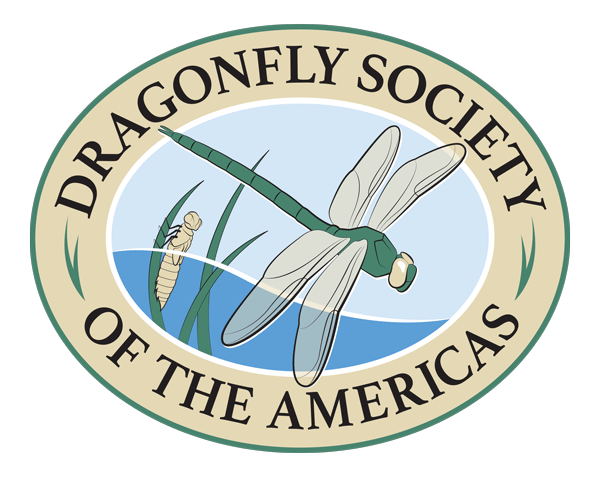March Species of the Month: Arrowhead Spiketail (Cordulegaster obliqua)
A male Arrowhead Spiketail (C. obliqua) photographed moments after the first state record ovipositing female was sighted. (Michael Moore)
March’s DSA species’ focus is the Arrowhead Spiketail (Cordulegaster obliqua). This dragonfly is in the family Cordulegastridae, commonly known as the Spiketails. These are medium to large dragonflies, measuring 72-81 mm (about three inches in total body length). Arrowhead Spiketails are found in the United States from Minnesota and southern Quebec to northern Florida and Louisiana. And now — Delaware! Enjoy Michael Moore’s story of searching for a state record, and the rewards of chasing dragonflies with a knowledgeable friend.
Predicting a First Arrowhead Spiketail for Delaware
It was a warm day in late June of 2015, when Hal White and I searched Blackbird Creek in Blackbird State Forest in Delaware for odonates. This creek has many unique early season odonates for Delaware, but the prize is a tiny relic population of Sable Clubtails (Stenogomphurus rogersi), one of only four known small populations remaining on the Delmarva Peninsula.
Blackbird State Forest, north of Smyrna, Delaware, is an underexplored area with much potential for other rare odonates.It contains the headwaters for Blackbird Creek, so the creek is relatively pristine here. It also has many vernal pools, seep streams and beaver ponds.
Another view of the seep stream in Blackbird State Forest, Delaware. (Michael Moore)
The first state record of Arrowhead Spiketail (C. obliqua) was this female ovipositing in the above stream on June 9, 2016. (Michael Moore)
Sable Clubtail (Stenogomphurus rogersi) (Michael Moore)
In addition to the Sable Clubtail, specialty odonates from here include Twin-spotted Spiketail (Cordulegaster maculata), old records of Delta-spotted Spiketail (C. diastatops), Harlequin Darner (Gomphaeschna furcillata), Taper-tailed Darner (G. antilope), Springtime Darner (Basiaeschna janata), Stream Cruiser (Didymops transversa), Common Sanddragon (Progomphus obscurus) and Turquoise Bluet (Enallagma divagans).There have been two sight records of Petite Emerald (Dorocordulia lepida), which would be a first state record, but this has not yet confirmed by photo or specimen.
Off the Beaten Path
Hal, a retired chemistry professor who has also been studying odonates for more than 60 years, and I usually cover a standard route in the forest, checking various spots on the creek. Today, he announced that he wanted to take me to a place I’d never been. We hiked deeper into the forest than I had ever gone, with Hal confidently navigating several intersections in the trail. I was lost! Soon, we arrived at a beautiful tiny seep stream crossing the trail. To me, it looked like many others in the forest. Hal told me that he thought the first state record for Arrowhead Spiketail (Cordulegaster obliqua) would come from this stream. We did not find any that day, but it was late in the season for them. Since Hal is uncannily accurate with these predictions, I resolved to return next year during peak season.
I somehow found this stream again next year on June 9, 2016. Almost immediately, I was rewarded with the sight of a female Arrowhead Spiketail working her way up the stream, ovipositing as she went. The first state record! It was the first time I had witnessed oviposition behavior in a Spiketail. Within a few minutes, two males cruised by. One perched for a great photo. In all, I estimated there were about six males cruising up and down this little stream that day. The stream is less than a meter (about three feet) wide and maybe only 100 meters (about 328 feet) long, and does occasionally dry out.
We have found Arrowhead Spiketails in subsequent years, but the tiny population remains the only one known in Delaware. Hal has never been able to tell me specifically what it was about this stream that made him believe the Arrowhead Spiketails would be there, only that it looks like other places where he has found them. He subsequently predicted and then found a previously unknown population of Gray Petaltail (Tachopteryx thoreyi). As I said, I always take Hal’s predictions seriously.
Our guest blogger for March is Michael C. Moore (mcmoore32@gmail.com). Mike is a recently retired Biology professor. He was at Arizona State University for 27 years and then at University of Delaware for 11 years before retiring a couple of years ago. He has published nearly 100 papers in scientific journals on behavior and hormones of birds and reptiles. He is currently Project Manager for Odonata Central, President of the Delaware Ornithological Society, a Vice President of the Dragonfly Society of the Americas and an eBIrd reviewer for Delaware. He maintains a website on the odonates of the Delmarva Peninsula (https://www.tramea.net/dmv/index.html).





